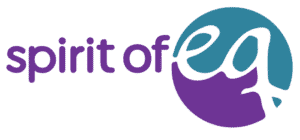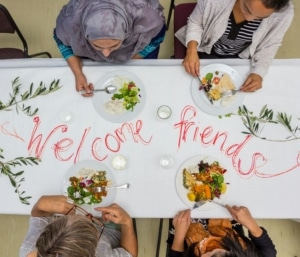When will the least go first?
If I can be really, painfully honest for a minute, I’ve always been the type of person who believes in being first. As an “8” on the Enneagram with a 1:1 subtype, I have a personality that can be described as “large or go home.” This trait has shaped my life in many ways, often pushing me to the front of the line—whether it was for food, concert tickets, or training sessions. I was the one who would elbow my way through the crowd, determined to secure my spot at the front. But as I reflect on my past, I realize that this behavior was not just a quirk of my personality; it reflected something deeper within me.
Let me take you back to a summer concert years ago to see the MC5 out of Detroit. The excitement was in the air as fans gathered outside the venue, eagerly awaiting the gates to open. I had been looking forward to this concert for months, and I was determined to be at the front of the line. As I arrived, I noticed a group of people who had been waiting for hours, some even camping out overnight. But that didn’t matter to me. I pushed my way to the front, ignoring the annoyed glances from those who had been patiently waiting. I felt a rush as I secured my spot, but as the concert began, I couldn’t shake the feeling that something was off. I knew in my heart that I had messed up.
As the music played and the crowd jammed, I looked around and saw the faces of those who had been waiting just as long, if not longer, than I had. I realized that my need to be first had come at the expense of others’ experiences. I had prioritized my own desire for front-row access over the feelings of those around me. It was a moment of clarity that left me feeling embarrassed and ashamed. Why did I feel the need to be first? Where did this belief come from?
This question rolled around in my mind long after the concert ended. I began to reflect on my life and the patterns that had emerged. Growing up, I was often praised for my assertiveness and determination. I was the one who took charge in group projects, the one who volunteered to lead discussions, and the one who always seemed to be at the forefront of any situation. But as I delved deeper, I realized that this drive to be first was rooted in a fear of being overlooked, discounted or left behind. It was as if I had internalized the belief that my worth was tied to my ability to be at the front of the line.
I decided that I needed to begin a quest of self-discovery, I started on a mission to find out more, I needed to understand why I acted this way, so I sought out stories from others who had experienced similar feelings. I spoke with a friend who had once been a competitive athlete. She recounted the pressure she felt to always be the best, to always be first. “I remember a race where I pushed myself so hard that I didn’t even notice the girl who fell behind me,” she shared. “I crossed the finish line, but I felt hollow. I had won, but at what cost?” Her story resonated with me, highlighting the emptiness that can accompany a relentless pursuit of being first. And yes, I know, being an athlete means being the best, first and fastest. But does that entitle us to perform like an athlete off the field in everyday life at the expense of others?
Another friend shared her experience of being a manager in a corporate setting. “I used to think that being the first to speak up in meetings made me a leader,” she said. “But I realized that it often stifled others’ voices. I was so focused on being heard that I didn’t create space for my team to contribute.” Her journey of learning to step back and allow others to shine was a powerful reminder that leadership is not about being at the front but about uplifting those around us.
As I continued to explore these stories, it dawned on me that the need to be first is often a reflection of our insecurities. It’s easy to equate being first with success, but true fulfillment comes from connection and empathy. (refer to Jim Collins book “Good to Great” and what makes a level 5 leader) It made sense after deep reflection to practice being more mindful in situations where I felt the urge to rush to the front. I began to ask myself, “What would it look like to let someone else go first?”
One day, I found myself in line at a coffee shop, and I noticed a young mother with a toddler in tow. The child was fidgeting and clearly restless, and I felt the familiar urge to push ahead. But instead of acting on that impulse, I took a deep breath and let the mother and child go ahead of me. As they moved forward, I saw the relief on her face, and in that moment, I felt a sense of understanding that I had never experienced when I was at the front. It was a small act, but it shifted my perspective. I realized that being at the front of the line didn’t define my worth; it was the kindness I showed to others that truly mattered.
This journey of self-discovery has taught me that there is beauty in allowing others to take the lead. It’s about recognizing that everyone has their own story, their own struggles, and their own desires. When we prioritize being first, we risk missing out on the richness of human connection. I’ve learned that sometimes, the least among us deserve to be at the front of the line, not just because they’ve waited the longest, but because they have something valuable to share.
As I continue to navigate this path, I remind myself that it’s okay to step back and let others shine. I’ve found that true fulfillment comes from lifting others up rather than pushing them down. The next time I find myself in a situation where I feel the urge to be first, I’ll pause and ask myself, “How can I create space for someone else?”
In a world that often celebrates the loudest voices and the fastest runners, let’s not forget the importance of compassion and empathy. Let’s strive to be the kind of people who recognize that sometimes, and not always, the least among us deserve to be at the front of the line. After all, it’s not about being first; it’s about being present, being kind, and being human.


